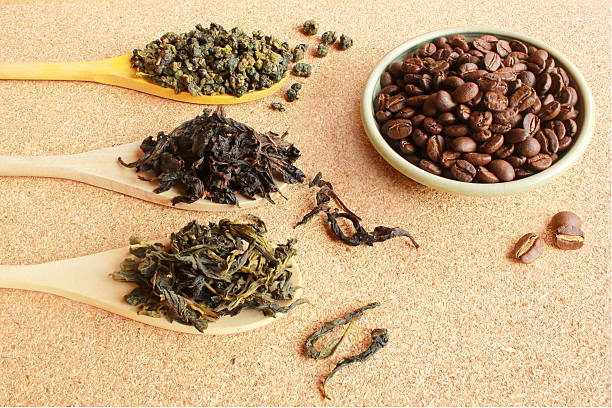Welcome to my article about “Caffeine In Green Tea Vs Black Tea Vs Coffee”. Caffeine goes beyond being a morning energizer; it’s a worldwide sensation that powers our lives and rejuvenates our spirits. From the lively coffeehouses in Europe to the serene tea ceremonies in Asia, caffeine has integrated itself into the core of human culture. But what is caffeine exactly, and why does it have such a significant influence on us? In this exploration, we will delve into the captivating realm of caffeine, discovering its presence in various beloved drinks and its profound impact on our health and well-being.
To truly grasp caffeine’s role in our lives, we must first comprehend its chemical composition. Caffeine is a natural stimulant in over 60 plant species, notably coffee beans, tea leaves, and cocoa pods. This potent compound obstructs adenosine, a neurotransmitter that promotes sleep and relaxation, resulting in heightened alertness and energy. It’s no surprise that caffeine has become a staple in many of our daily routines, providing an essential boost to navigate our hectic lives.

Green tea, black tea, and coffee are among the most popular caffeinated beverages, each with unique cultural and historical importance. Green tea, originating in ancient China, has been revered for centuries for its delightful flavor and numerous health benefits. It is frequently linked with mindfulness and tranquility, integral to traditional Japanese tea ceremonies that highlight the beauty of simplicity and the art of living in the present moment.
On the other hand, black tea boasts a robust flavor and a rich history across continents. Emerging in China, it garnered substantial popularity in Britain during the 17th century, evolving into a symbol of social gatherings and high society. Presently, black tea is enjoyed worldwide, renowned for its adaptability and comforting, bold taste.
Coffee, arguably the most widespread caffeinated beverage, has a history that can be traced back to the ancient coffee forests of Ethiopia. According to legend, a goat herder named Kaldi discovered the enlivening effects of coffee beans after observing his goats becoming unusually animated after consuming them. This finding led to the cultivation of coffee and the establishment of coffeehouses, which evolved into hubs of social interaction, intellectual discussions, and cultural interchange.
It is essential to recognize the caffeine content in these beverages to make knowledgeable decisions about our well-being and general health. While moderate caffeine consumption can enhance mental alertness and physical performance, excessive intake can result in adverse effects such as insomnia, nervousness, and an elevated heart rate. Being mindful of our caffeine intake can harness its benefits while minimizing potential risks.
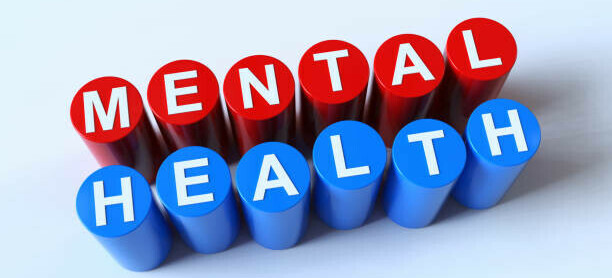
As we navigate through the stimulating realm of caffeine, we will uncover the science behind its stimulating effects and the wide variety of traditions and cultures that have embraced this extraordinary compound. Whether you’re passionate about tea, a coffee expert, or just interested in understanding how caffeine affects you, this investigation will provide valuable knowledge and encourage a greater understanding of the drinks that fuel our daily lives.
The Subtle Surge: Caffeine Content in Green Tea
Green tea is commonly known for its subtle taste, and numerous health advantages, and its caffeine content is a significant factor in its popularity. The caffeine in green tea, while not as potent as in coffee or black tea, offers a subtle but efficient pick-me-up. This explains its popularity among individuals who want a gentle energy boost without experiencing jitteriness. Having an understanding of the nuances of green tea’s caffeine levels can help you make informed decisions about incorporating this beverage into your daily routine.
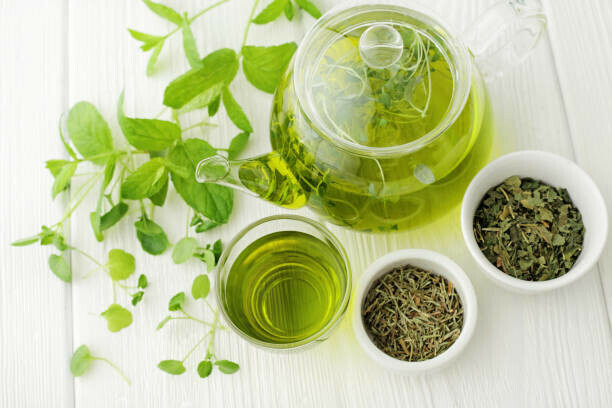
The caffeine content in green tea varies, typically between 20 and 45 milligrams per 8-ounce cup. Several factors influence this variation, including the type of green tea, the growing conditions, and the processing and brewing methods. High-quality green teas, such as matcha, usually have higher caffeine levels due to using young, tender leaves packed with nutrients. Conversely, lower-grade teas made from older leaves contain less caffeine.
The cultivation practices significantly influence the caffeine content of green tea. Tea plants grown in shaded environments, known as shading or “Kabusecha” in Japanese, produce leaves with higher caffeine levels. The growth of the tea leaves is decelerated by this process, leading to an increased level of amino acids and caffeine. On the other hand, tea plants exposed to direct sunlight tend to produce leaves with lower caffeine levels but higher catechins, contributing to the tea’s astringency.
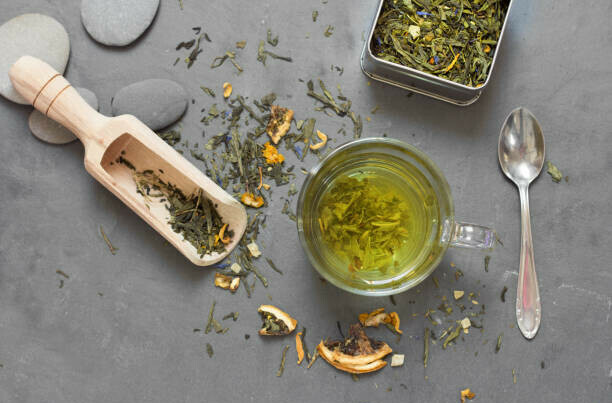
How the tea is processed is also crucial in deciding how much caffeine it contains. Green tea goes through minimal oxidation, unlike black tea, which helps it retain more of its natural components, such as caffeine. For example, the steaming process used in Japanese green tea production helps retain higher caffeine levels. In contrast, pan-firing methods standard in Chinese green tea production can lead to slight variations in caffeine concentration.
Brewing techniques also significantly influence the caffeine extracted from green tea leaves. The final caffeine content in your cup is influenced by the temperature of the water, the amount of time the tea is steeped, and the proportion of tea leaves to water. Generally, higher temperatures and longer steeping times release more caffeine, while cooler water and shorter brewing periods yield a milder infusion.
When comparing green tea to coffee and black tea, it becomes clear that green tea provides a milder caffeine boost. With its robust caffeine content averaging around 95 milligrams per cup, coffee delivers a strong, immediate surge of energy. Black tea typically contains 40 to 70 milligrams of caffeine per cup, offering a middle ground between the gentle lift of green tea and the intense buzz of coffee. This makes green tea an ideal choice for those who seek a balanced, sustained energy boost without the risk of overstimulation.
Green tea’s distinctive qualities and moderate caffeine content make it a versatile and attractive beverage. Understanding the elements that impact caffeine levels allows you to tailor your green tea experience to match your individual tastes and health objectives.
The Bold Awakening: Examining Black Tea’s Caffeine Potency
Black tea is renowned for its robust taste and energizing aroma, distinguishing itself for its flavor and caffeine strength. This widely loved drink has found its place among tea fans, providing a bold awakening that competes with even the most potent coffee. But what makes black tea stand out in terms of both taste and caffeine content?

One crucial factor contributing to black tea’s unique characteristics is its fermentation process. In contrast to green tea, which undergoes minimal processing, black tea leaves are fully oxidized. This oxidation process changes the green leaves into the dark and richly flavored tea we know and enjoy. The fermentation enhances the flavor, bringing out notes of malt, honey, and sometimes even chocolate, and also impacts the caffeine content. Fully oxidized leaves release more caffeine during brewing, resulting in a more robust and more refreshing cup of tea.
The caffeine content in black tea typically falls within the range of 40 to 70 milligrams per 8-ounce cup, positioning it between green tea and coffee in terms of potency. Because of its moderate caffeine levels, black tea is an excellent option for people who want a significant energy boost without the powerful impact of coffee. The fermentation process intensifies the caffeine extraction, ensuring that each sip delivers a satisfying kick to kickstart your day or keep you going during an afternoon slump.

From a health perspective, the caffeine in black tea offers several benefits, although it should be consumed with mindfulness. The beneficial properties of black tea are due to the presence of antioxidants like theaflavins and thearubigins. These compounds aid in reducing inflammation, supporting heart health, and enhancing mental alertness. However, it’s important to take individual caffeine tolerance into consideration. While black tea offers a milder lift than coffee, it still provides a more substantial impact than green tea, which may be preferable for those sensitive to caffeine.
When comparing black tea to other types, green tea provides a milder and longer-lasting increase in energy due to its lower caffeine content, making it a good choice for people who like a subtle energy boost. Coffee, with its high caffeine concentration averaging around 95 milligrams per cup, delivers a quick and intense jolt that can be overwhelming for some. Black tea strikes a balance, offering a robust and flavorful option for those who want a noticeable yet manageable caffeine boost.
In conclusion, the unique blend of full-bodied flavor and moderate caffeine content in black tea makes it a versatile and appealing choice for tea enthusiasts. Whether you’re an experienced tea drinker or new to the world of tea, understanding the distinct characteristics of black tea can help you appreciate its role in your daily routine and its impact on your overall well-being.
Coffee: The Classic Caffeine Champion
Coffee, the adored beverage that kick-starts mornings and powers productivity, is famous for its abundance of caffeine. This timeless caffeine champion has secured its spot in the affections of millions worldwide, not only for its flavorful and refreshing taste but also for its potent capacity to keep us attentive and energized. But what sets coffee apart as the ultimate caffeine source, and what factors affect its strength?

Coffee’s dominance in caffeine content is mainly due to the inherent nature of the coffee bean itself. Coffee beans have a higher caffeine concentration per gram than tea leaves, making coffee a naturally more robust stimulant. The brewing process further intensifies this high concentration by efficiently extracting caffeine from the ground beans, producing a solid, energy-boosting beverage. A typical 8-ounce coffee cup holds approximately 95 milligrams of caffeine, considerably higher than the caffeine content in an equivalent tea serving.
Variations in caffeine levels in coffee can be attributed to the type of coffee bean and the roasting process. There exist two main kinds of coffee beans: Arabica and Robusta. Arabica beans, famous for their smooth and intricate tastes, typically have lower caffeine levels than Robusta beans, which are more bitter but deliver a more pronounced caffeine punch. The process of roasting also dramatically affects the caffeine levels. In contrast to popular belief, lighter roasts usually retain more caffeine than darker roasts because the longer roasting time of dark roasts breaks down more caffeine molecules. Therefore, a cup of light roast coffee typically boosts more caffeine than a dark roast.

While coffee’s high caffeine content provides several benefits, such as heightened mental alertness and improved physical performance, it’s vital to consume it conscientiously. Enjoying a moderate amount of coffee has been associated with various health advantages, such as lowering the risk of certain conditions like Parkinson’s, Alzheimer’s, and specific types of cancer. The antioxidants in coffee also contribute to its favorable health effects by helping to combat inflammation and protect against cell damage.
Finding a balance is crucial because excessive coffee consumption can result in sleeping difficulties, increased anxiety, and a higher heart rate. Knowing your limits and drinking coffee in moderation will allow you to experience positive effects while reducing possible downsides.
In essence, coffee’s status as the ruler of caffeine is well-earned, thanks to its naturally high caffeine content and the diverse ways it can be customized to fit individual preferences. By understanding the differences in beans and roasting techniques, coffee enthusiasts can savor their preferred brew while maintaining a balanced, health-conscious approach to consumption.
Making an Informed Choice: What’s Your Perfect Caffeine Match?
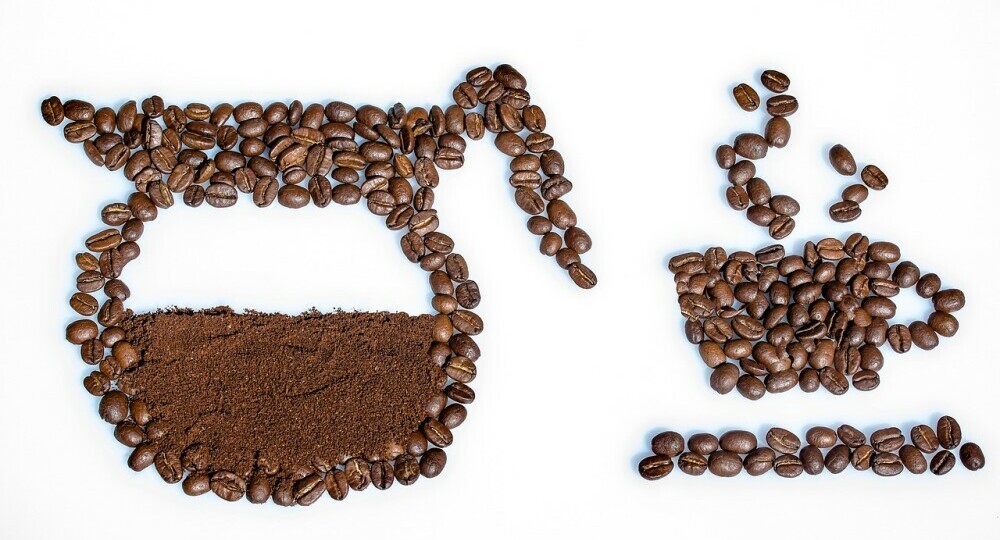
Coffee, the beloved drink that jump-starts mornings and boosts productivity, is renowned for its high caffeine content. This timeless caffeine powerhouse has earned a special place in the hearts of millions worldwide, not only for its delicious and refreshing flavor but also for its potent ability to keep us alert and energized. But what makes coffee stand out as the ultimate source of caffeine, and what factors influence its potency?
The predominance of caffeine in coffee is primarily attributed to the inherent nature of the coffee bean itself. Coffee beans contain a higher caffeine concentration per gram than tea leaves, making coffee a naturally more potent stimulant. The brewing process further enhances this high concentration by effectively extracting caffeine from the ground beans, producing a powerful, energy-boosting beverage. An average 8-ounce serving of coffee typically contains about 95 milligrams of caffeine, which is noticeably higher than the amount found in an equivalent tea serving.
Fluctuations in caffeine levels in coffee can be ascribed to the type of coffee bean and the roasting process. Arabica and Robusta represent the two main kinds of coffee beans. Recognized for their smooth and complex flavors, Arabica beans usually have lower caffeine levels than Robusta beans. On the other hand, Robusta beans are more bitter but provide a more potent caffeine jolt. The roasting process also significantly impacts caffeine levels. Contrary to popular belief, lighter roasts typically retain more caffeine than darker roasts because the extended roasting time of dark roasts breaks down more caffeine molecules. Therefore, a light roast coffee generally contains more caffeine than a dark roast.
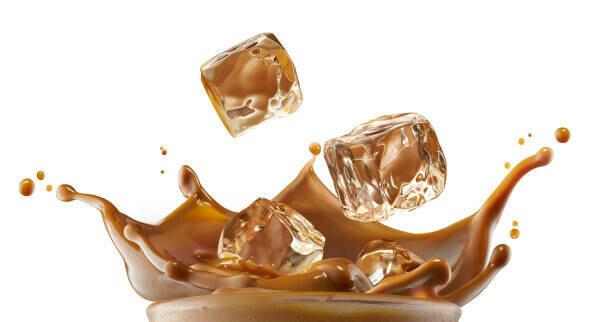
While coffee’s high caffeine content offers several benefits, such as increased mental alertness and enhanced physical performance, it is essential to consume it responsibly. Consuming a reasonable quantity of coffee has been associated with different health advantages, including lowering the chances of specific conditions like Parkinson’s, Alzheimer’s, and certain forms of cancer. The antioxidants in coffee also contribute to its positive health effects by helping to combat inflammation and protect against cell damage.
Striking a balance is crucial because excessive coffee consumption can lead to difficulties in sleeping, heightened anxiety, and an increased heart rate. Understanding your limits and consuming coffee in moderation will enable you to experience its positive effects while minimizing potential drawbacks.
In essence, coffee’s position as the king of caffeine is well-deserved, thanks to its naturally high caffeine content and the various ways it can be tailored to individual preferences. By understanding the distinctions in beans and roasting methods, coffee enthusiasts can enjoy their preferred brew while maintaining a balanced, health-conscious approach to consumption.
Thank you for reading my article about “Caffeine In Green Tea Vs Black Tea Vs Coffee”, and I would love to receive your comments down below, in case of any.

